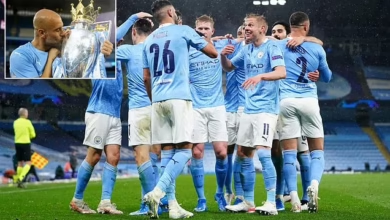Liverpool’s Midfield Revolution: Navigating the Transfer Market in Modern Footba

The landscape of modern football transfers has become increasingly complex, with astronomical fees, agent demands, and intense competition for the world’s brightest talents. Liverpool Football Club’s recent experiences in the transfer market perfectly encapsulate these challenges, particularly their pursuit of elite midfield talent and the strategic pivots required when dream signings become financially unfeasible.
The Merseyside club’s midfield conundrum represents more than just a single transfer saga—it reflects the broader evolution of football economics, the delicate balance between ambition and financial sustainability, and the art of strategic recruitment in an ever-inflating market. This analysis examines the multifaceted challenges facing Liverpool as they navigate one of the most crucial rebuilding phases in recent memory.
## The Bellingham Phenomenon: Understanding Modern Transfer Dynamics
Jude Bellingham’s rise from Birmingham City teenager to one of Europe’s most coveted midfielders represents the new paradigm of football development and valuation. His journey illustrates how quickly talented players can command astronomical fees, often pricing out even historically successful clubs from pursuing their primary targets.
The financial reality of acquiring players of Bellingham’s caliber has fundamentally shifted. Transfer fees exceeding £120 million are no longer exceptional but increasingly common for players who combine technical excellence with commercial appeal and age on their side. This inflationary pressure stems from multiple factors: increased television revenues, financial backing from sovereign wealth funds, and the competitive arms race among Europe’s elite clubs.
Liverpool’s withdrawal from the Bellingham race highlights a crucial decision point that many clubs face: the choice between pursuing a transformational signing that could compromise other areas of squad development, or adopting a more balanced approach that addresses multiple needs simultaneously. This strategic pivot reflects mature financial planning rather than a lack of ambition.
The psychological impact of missing out on marquee signings cannot be understated. For supporters, these high-profile targets often represent hope and ambition made tangible. When clubs publicly step back from such pursuits, it can create a narrative of decline or financial weakness, regardless of the underlying strategic wisdom of the decision
Modern football clubs operate within increasingly complex financial frameworks. UEFA’s Financial Fair Play regulations, while evolving, continue to influence transfer strategies. Liverpool’s approach reflects a club that has learned valuable lessons from past transfer windows, both successful and less so.
The cost of elite talent extends far beyond the initial transfer fee. Agent commissions, signing bonuses, wage structures, and the knock-on effects on existing squad members’ contract negotiations create a web of financial implications. A £120+ million signing doesn’t exist in isolation—it fundamentally alters a club’s entire financial ecosystem.
Liverpool’s recent history demonstrates both the rewards and risks of significant investment. The acquisitions of players like Virgil van Dijk and Alisson Becker proved transformational, directly contributing to Champions League and Premier League success. However, the club has also experienced the disappointment of expensive signings who failed to deliver expected returns on investment.
The timing of Liverpool’s midfield rebuild coincides with broader squad renewal needs. Aging players require replacements, contracts need renegotiation, and infrastructure investments demand attention. In this context, concentrating resources on a single player, regardless of their quality, may not represent optimal resource allocation.
Liverpool’s pivot toward multiple midfield acquisitions rather than one marquee signing represents a sophisticated approach to squad building. This strategy acknowledges several key principles of successful recruitment: diversification of risk, addressing multiple tactical needs, and creating internal competition for places.
The modern game demands midfielders who can fulfill multiple roles within different tactical systems. Liverpool’s pursuit of varied profiles—from the creativity of Mason Mount to the physicality and work rate of other targets—suggests a nuanced understanding of tactical flexibility requirements.
Mason Mount’s situation at Chelsea presents an intriguing case study in market dynamics. A player of undisputed talent and Premier League experience, his contractual situation and club circumstances create potential value opportunities. His versatility, having operated effectively in various midfield roles and attacking positions, aligns with Liverpool’s tactical evolution under Jürgen Klopp.
The cooling of interest in certain targets, such as Matheus Nunes, demonstrates the fluid nature of transfer planning. Player development, changing club circumstances, and evolving tactical requirements mean that target lists must remain dynamic. This flexibility, while sometimes interpreted as indecision, actually represents sophisticated recruitment planning.
International midfield targets like Nicolo Barella, Ryan Gravenberch, Teun Koopmeiners, and Luka Sucic each offer different attributes and developmental trajectories. Barella brings Serie A experience and international pedigree. Gravenberch offers Bundesliga exposure and physical attributes. Koopmeiners provides goal threat from midfield, while Sucic represents longer-term potential.
Liverpool’s midfield requirements extend beyond individual player quality to encompass tactical fit within Klopp’s evolving system. The German manager’s tactical philosophy has continuously evolved, responding to opposition adaptations, player availability, and the changing dynamics of Premier League football.
The traditional Liverpool midfield triangle of recent successful seasons relied heavily on specific player characteristics: work rate, pressing intensity, positional intelligence, and technical security under pressure. However, tactical trends across European football suggest increasing importance for midfielders who can contribute goals, assists, and creative moments in addition to their defensive and transitional duties.
Modern midfield players must demonstrate versatility across multiple positions and phases of play. The days of strict positional specialization are declining, replaced by demands for tactical intelligence and technical proficiency in various roles. This evolution impacts recruitment strategies, as clubs must identify players capable of adapting to different tactical requirements.
Liverpool’s tactical identity under Klopp emphasizes high pressing, rapid transitions, and creative overloads in advanced positions. Midfield recruits must demonstrate not only technical ability but also the physical and mental attributes necessary to implement this demanding style consistently across a long season.
The integration of new midfield players requires careful consideration of existing relationships within the squad. Chemistry between midfield partners often develops over extended periods, and disrupting successful partnerships carries risks even when individual upgrades seem obvious on paper.
Liverpool’s transfer planning occurs within a broader sporting structure that has undergone significant changes. The departure of sporting director Julian Ward represents both challenge and opportunity, requiring the club to potentially reimagine their recruitment philosophy and processes.
Successful modern clubs demonstrate consistency in their recruitment approach across different personnel changes. Liverpool’s challenge lies in maintaining their successful identification and development of talent while potentially adapting to new leadership perspectives and market conditions.
The relationship between manager, sporting director, and ownership group significantly influences transfer strategy. Clear communication channels, shared vision, and aligned expectations prove crucial for successful recruitment outcomes. Liverpool’s history suggests strong collaboration between these stakeholders, though personnel changes inevitably create adjustment periods.
Data analytics has become increasingly important in modern recruitment, supplementing traditional scouting methods with sophisticated performance metrics and predictive modeling. Liverpool’s investment in analytical capabilities positions them well to identify value opportunities in an increasingly efficient market.
The club’s academy development also influences first-team recruitment strategy. Promising young players emerging from the youth setup can reduce pressure for immediate signings while providing long-term squad depth. This internal development must be factored into transfer planning and tactical preparation
Liverpool’s position in the transfer market reflects broader competitive dynamics within European football. The club’s recent success has elevated their profile and attractiveness to potential signings, but also increased competition from other elite clubs pursuing similar targets.
Manchester City’s financial resources and consistent success create formidable competition for elite signings. Real Madrid’s historical prestige and continued competitiveness at the highest level provide alternative attractions for ambitious players. These competitive pressures require Liverpool to differentiate their proposition through other means: playing style, development opportunities, or cultural fit.
The timing of transfer pursuits often proves as important as the financial commitment involved. Early identification and relationship building can provide advantages over competitors who enter negotiations later. However, this approach carries risks if player circumstances or preferences change over extended timeframes.
Liverpool’s brand strength in global markets provides certain advantages in attracting international talent. The club’s recent success, historical reputation, and the appeal of English football create positive factors in recruitment conversations. However, these advantages must be leveraged effectively through professional relationship management and clear sporting vision.
The decision to step back from pursuing certain high-profile targets reflects Liverpool’s commitment to long-term financial sustainability over short-term statement making. This approach acknowledges the cyclical nature of football success and the importance of maintaining competitive capabilities across multiple seasons.
Transfer spending must be viewed within the broader context of club finances: stadium investments, infrastructure development, contract renewals for existing players, and operational costs. Optimal resource allocation rarely involves concentrating available funds on single acquisitions, regardless of player quality.
The potential absence of Champions League football creates additional financial pressures through reduced revenue streams and diminished attractiveness to certain player profiles. These circumstances require adaptive strategies that acknowledge changed competitive positioning while maintaining long-term ambitions.
Liverpool’s ownership group has demonstrated commitment to the club’s success through previous significant investments. However, the sustainable business model they pursue requires careful balance between sporting ambition and financial prudence. This approach has generally served the club well, enabling sustained competitiveness over extended periods.
Managing supporter expectations represents a crucial aspect of modern club leadership, particularly during high-profile transfer sagas. Liverpool’s fan base, like most elite clubs, maintains high expectations for transfer activity and squad development.
Effective communication about transfer strategies requires balancing transparency with operational necessity. Clubs cannot reveal all aspects of their recruitment planning without compromising competitive advantages, but supporters deserve understanding of general approaches and strategic thinking.
The emotional investment of supporters in potential signings creates particular challenges when clubs pivot away from high-profile targets. Clear explanation of strategic reasoning, while not always immediately satisfying, ultimately builds trust in club decision-making processes.
Social media and modern communication channels amplify both positive and negative reactions to transfer decisions. Clubs must navigate these dynamics while maintaining focus on long-term strategic objectives rather than short-term opinion management
Liverpool’s academy continues producing talented players who could contribute to first-team objectives. The integration of young players into senior squads requires careful planning and appropriate opportunities, but provides both financial and sporting advantages when successful.
The pathway from academy to first team has become increasingly challenging as competition for places intensifies at elite levels. However, clubs that successfully integrate young talent often benefit from both sporting and financial perspectives, developing players who understand club culture while potentially generating future transfer revenues.
Balancing youth development with immediate competitive needs requires sophisticated planning and realistic timeframe expectations. Young players need appropriate development opportunities, which may conflict with short-term results pressure in certain circumstances.
The success of previous Liverpool academy graduates in establishing first-team careers provides positive examples for current young players while demonstrating the club’s commitment to youth development. This reputation can assist in attracting talented young players to the academy system
Modern football’s tactical evolution continues influencing recruitment strategies and player requirements. Liverpool’s system under Klopp has demonstrated flexibility and adaptation over time, requiring players capable of implementing various tactical approaches.
The increasing importance of positional flexibility means recruiters must identify players comfortable operating in multiple roles within the same system. This versatility provides tactical options while maximizing squad utilization across congested fixture schedules.
Set piece specialization has become increasingly important in modern football, with dedicated coaches and specific tactical preparation. Midfield recruits who contribute to set piece situations, either defensively or offensively, provide additional value beyond open play contributions.
The psychological demands of high-pressing systems require particular mental attributes from midfield players. Sustained concentration, decision-making under fatigue, and collective responsibility for defensive actions demand specific personality characteristics alongside technical abilities.














